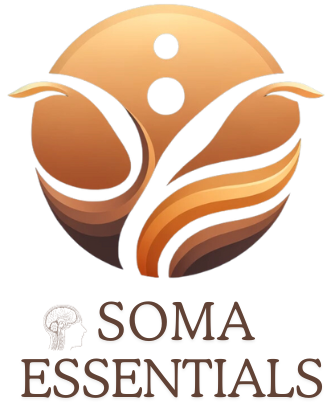Understanding the Fight, Flight, Freeze Response for Improving Mind-Body Connection
Somatic experiencing is a powerful and transformative approach to healing trauma and restoring mind-body connection. At the core of this method lies the understanding of the fight, flight, freeze response – a natural and instinctive reaction to danger that is deeply ingrained in all of us. In this article, we will explore the key concepts of somatic experiencing and how understanding the fight, flight, freeze response can help improve our mind-body connection. Whether you are a trauma survivor or simply looking to enhance your overall well-being, this article will provide valuable insights on how to navigate this innate response and cultivate a greater sense of harmony within yourself. So let’s dive in and discover how somatic experiencing can bring about profound transformation and healing in our lives.In this article, we will explore the principles of somatic movement and healing, as well as somatic therapy and exercises, that can help you reconnect with your body and tap into its innate healing abilities. We will also delve into the world of somatic psychology and how it can aid in self-discovery and body awareness. By the end of this article, you will have a better understanding of how the fight, flight, freeze response works and how it can be harnessed for your benefit.The fight, flight, freeze response is a natural and instinctive reaction to perceived danger or stress. It is a survival mechanism that prepares the body to either fight off a threat, run away from it, or freeze in place. This response is triggered by the sympathetic nervous system, which releases hormones such as adrenaline and cortisol to prepare the body for action.While this response can be helpful in truly dangerous situations, it can also be triggered by everyday stressors such as work deadlines or traffic jams. Chronic activation of the fight, flight, freeze response can lead to physical and emotional imbalances, affecting our overall well-being.This is where somatic experiencing comes in. Somatic experiencing is a therapeutic approach that focuses on the mind-body connection and helps individuals release tension and trauma stored in the body. By becoming more aware of our bodily sensations and using specific exercises and techniques, we can learn to regulate our fight, flight, freeze response and achieve a greater sense of balance.Somatic therapy is another form of treatment that utilizes somatic experiencing principles to address physical and emotional issues. It involves working with a trained therapist to identify and release stored tension in the body through touch, movement, and verbal communication. This can help individuals gain a deeper understanding of their bodies and emotions, leading to improved overall health and well-being.In addition to therapy, there are also somatic exercises that can be practiced on your own to help regulate the fight, flight, freeze response. These exercises involve paying attention to bodily sensations and using breath, movement, and imagery to release tension and promote relaxation.Somatic psychology is a field that combines the principles of somatic experiencing and psychology to address both physical and emotional issues. It focuses on the mind-body connection and how past experiences and traumas can manifest in the body. By becoming more aware of our bodily sensations and emotions, we can gain a better understanding of ourselves and work towards healing and growth.By understanding the fight, flight, freeze response and how it can be regulated through somatic practices, we can improve our mind-body connection and overall well-being. Learning to tune into our bodies and release stored tension can lead to a greater sense of balance and harmony in our lives. So if you’re looking to improve your mind-body connection, give somatic experiencing and therapy a try. Your body will thank you for it.
Somatic Psychology
Somatic psychology is a field that focuses on the connection between the mind and body, and how our physical experiences can impact our psychological well-being. It explores the idea that our bodies hold onto emotions and traumas, and that by bringing awareness to these sensations, we can gain a deeper understanding of ourselves.
One of the key principles of somatic psychology is the concept of embodiment. This refers to the idea that our bodies are not just vessels for our minds, but rather an integral part of our being. By paying attention to our physical sensations and movements, we can tap into a deeper level of self-awareness and self-discovery.
Another important aspect of somatic psychology is the belief that our bodies have an innate capacity for healing. By becoming more attuned to our physical sensations, we can learn to release tension and stress, allowing our bodies to return to a state of balance and harmony.
Through somatic psychology practices, such as somatic experiencing, we can learn to regulate the fight, flight, freeze response and cultivate a more mindful and embodied way of living. This can not only improve our mind-body connection, but also enhance our overall well-being and quality of life.
Somatic Therapy and Exercises
Somatic therapy is a type of psychotherapy that focuses on the mind-body connection and the role it plays in our overall well-being. It utilizes various techniques and exercises to help individuals release tension and trauma stored in the body, leading to improved physical and emotional health.
One of the key concepts of somatic experiencing is understanding the fight, flight, freeze response and how it can impact our mind-body connection. By learning how to manage this natural response, we can achieve a better sense of balance and harmony in our lives.
Some common exercises used in somatic therapy include deep breathing, progressive muscle relaxation, and body scans. These techniques help to bring awareness to the body and release any tension or stress held within.
In addition to these exercises, somatic therapists may also use touch or movement-based techniques to help individuals connect with their bodies and release any held trauma or tension. This can include techniques such as massage, yoga, or dance therapy.
Overall, somatic therapy offers a holistic approach to improving our mind-body connection and overall well-being. By incorporating these techniques and exercises into our daily lives, we can cultivate a deeper understanding of ourselves and achieve a greater sense of balance and harmony.
Somatic Movement and Healing
Somatic movement and healing practices are powerful tools for enhancing the mind-body connection. By tuning into our bodies and engaging in specific movements and techniques, we can tap into our body’s innate healing abilities.
The fight, flight, freeze response is a natural survival mechanism that is activated in times of stress or danger. However, in today’s fast-paced world, this response can become overactive and cause imbalances in our physical and emotional well-being. By incorporating somatic movement and healing into our daily routine, we can learn how to manage this response and achieve a better sense of balance and harmony in our lives.
Somatic experiencing, a key concept in somatic movement and healing, focuses on releasing tension and trauma stored in the body through gentle movements and mindfulness techniques. By becoming more aware of our body’s sensations and movements, we can release tension and promote healing from within.
Through somatic movement and healing, we can also improve our overall physical health. By moving our bodies in specific ways, we can release tension, increase flexibility and strength, and improve our posture. This can also have a positive impact on our emotional well-being, as our physical health is closely connected to our mental health.
So if you’re looking to improve your mind-body connection and overall well-being, consider incorporating somatic movement and healing practices into your daily routine. By tapping into your body’s innate healing abilities, you can achieve a sense of balance and harmony that will benefit both your body and mind.
The fight, flight, freeze response is a natural part of our human experience. By understanding its mechanisms and learning how to manage it through somatic practices, we can achieve a better sense of balance and harmony in our lives. Remember to listen to your body, and always prioritize your well-being.

